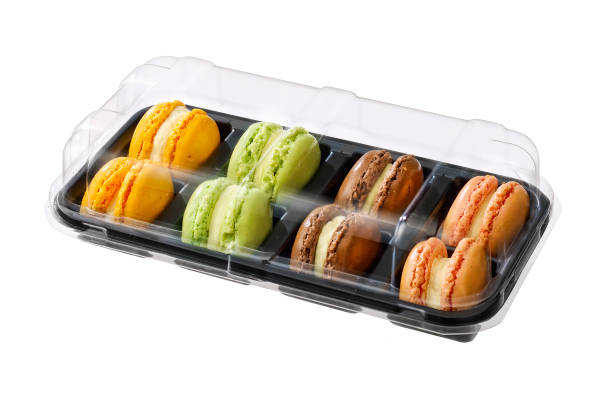It’s the 21st Century, and plastic bakery trays are no longer confined to bakeries. Other industries have found uses for these single-layer trays. The ventilated base is perfect for any item that could benefit from air circulation. With interlocking rails, these trays can also be securely stacked to prevent shifting.
Plastic bakery trays are durable and reusable. They can be stacked or nested to minimize storage space. With reinforced bottoms, trays can be used for more than lightweight baked goods. Bakery trays come in a range of colors and sizes, making them perfect for in-store displays and storage.
So where can plastic bakery trays be found now that they’ve escaped from the kitchen?
Farmer’s Markets
Of course, bakery trays are great for transporting and displaying those homemade pastries, cookies, and breads, but they’re also perfect for produce. Place tomatoes or peppers on a tray. Rinse them with clean water to remove dirt. Let the water drain through the porous bottom and then stack them for transport and arrange them in an attractive display.
During the heat of summer, mist carrots, cucumbers, or green beans with water to keep them looking their best. With well-ventilated plastic bakery trays, the water doesn’t pool and damage the fruits or vegetables. Plastic bakery trays are a colorful way for vendors to display their produce in a crowded farmer’s market.
Butcher Shops
As meat is cut at a butcher shop, cuts can be placed in plastic bakery trays for rinsing before being put into cold storage. Using different colored trays helps identify steaks, roasts, and specialty meats, making it easier to label meat appropriately for sale. Because the trays allow air to circulate, perishable items such as beef, chicken, pork, and fish can be stored at a safe temperature, unaffected by any pockets of warm air.
Stackable bakery trays leave sufficient space between trays to ensure the meat is not crushed or damaged. When it’s time to move the trays out of cold storage, they can be rolled to display cases if placed on wheeled racks.
Florists and Nurseries
Florists place flowers in coolers to keep them fresh. Usually, in containers full of water. For short-stemmed flowers, plastic bakery trays are a great option. Placing stems on trays inside coolers equipped with automated misting systems can keep flowers fresh without the risk of over-watering. Any excess liquid will simply drain away.
Potted plants can be placed on bakery trays—either in cold storage containers or on nursery shelves. When potted plants are placed on wooden pallets, the water can pool at the base of the pot, which can damage plants. By using plastic bakery trays, potted plants can be watered without damaging the plant because water drains through the holes in the bottom of the tray.
Florists can deploy the same trays for storing arrangements. When they place arrangements in coolers, they can set them on bakery trays. This provides the proper drainage and adequate airflow necessary to keep them fresh.The same trays can be used for transporting the arrangements. The trays will also prevent arrangements from tipping over and can be easily cleaned with soap and water.
Nurseries use bakery trays as potting stations. When seedlings need to be transplanted into bigger pots, the empty pots can be placed on the bakery trays. The seedlings and potting soil are placed in each pot and then watered. Dirt and debris can be washed off and the containers left to dry. The durable bakery trays keep potting materials in one place, making for easy cleaning.
Schools
Most elementary schools have spring science projects that involve plants and gardens. Middle school children often create vegetable gardens and share the produce with their community. Plastic bakery trays can be a great way to keep a school garden organized.
Give each child a bakery tray. Have them place the trays upside down and push them into the soil. The trays can be placed side-by-side in rows or circles. Each child plants their tray with flowers or vegetables, using the holes in the tray as a guide.
Preset holes make it easier for children to know where to place plants or dig holes for seeds. The trays simplify the process for teachers, since they don’t have to worry about where students are planting their seeds.
Clearly defined spaces make it easier to identify sections within the garden and ensure that each child is maintaining their own plants. Once the projects are complete, the trays can be removed, washed, and stored for next year.
Because plastic bakery trays are reusable, schools minimize the expense of purchasing paper or cardboard planting aids every year. Plus, trays made from recycled plastic serve as another lesson on environmental responsibility.
